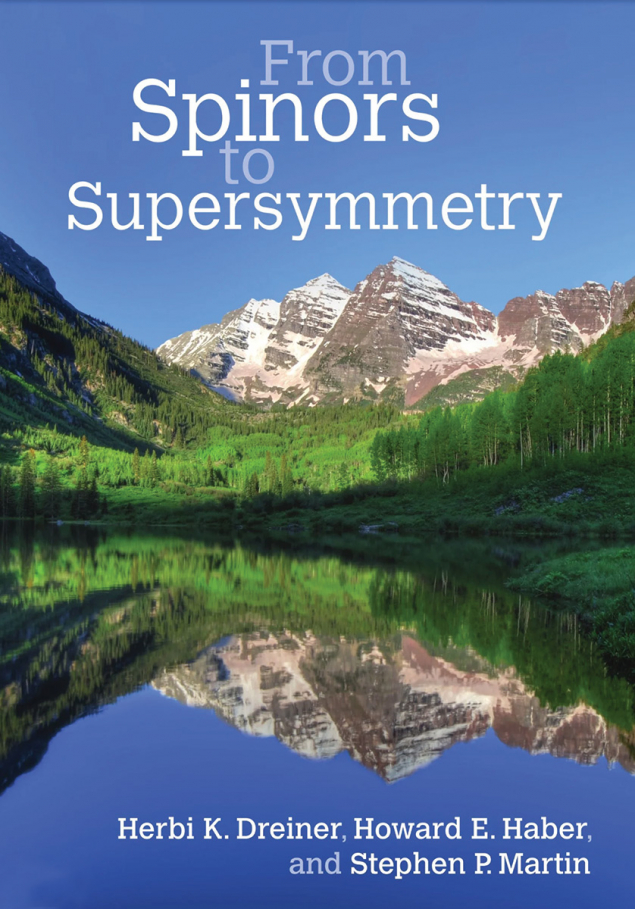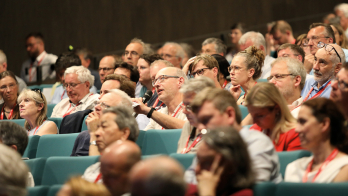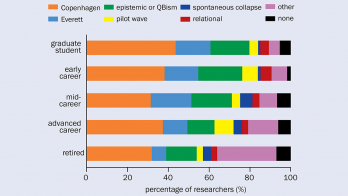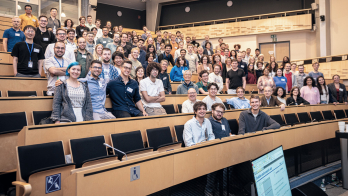From Spinors to Supersymmetry, by Herbi Dreiner, Howard Haber and Stephen Martin, Cambridge University Press

This text is a hefty volume of around 1000 pages describing the two-component formalism of spinors and its applications to particle physics, quantum field theory and supersymmetry. The authors of this volume, Herbi Dreiner, Howard Haber and Stephen Martin, are household names in the phenomenology of particle physics with many original contributions in the topics that are covered in the book. Haber is also well known at CERN as a co-author of the legendary Higgs Hunter’s Guide (Perseus Books, 1990), a book that most collider physicists of the pre and early LHC eras are very familiar with.
The book starts with a 250-page introduction (chapters one to five) to the Standard Model (SM), covering more or less the theory material that one finds in standard advanced textbooks. The emphasis is on the theoretical side, with no discussion on experimental results, providing a succinct discussion of topics ranging from how to obtain Feynman rules to anomaly-cancellation calculations. In chapter six, extensions of the SM are discussed, starting with the seesaw-extended SM, moving on to a very detailed exposition of the two-Higgs-doublet model and finishing with grand unification theories (GUTs).
The second part of the book (from chapter seven onwards) is about supersymmetry in general. It begins with an accessible introduction that is also applicable to other beyond-SM-physics scenarios. This gentle and very pedagogical pattern continues to chapter eight, before proceeding to a more demanding supersymmetry-algebra discussion in chapter nine. Superfields, supersymmetric radiative corrections and supersymmetry symmetry breaking, which are discussed in the subsequent chapters, are more advanced topics that will be of interest to specialists in these areas.
The third part (chapter 13 onwards) discusses realistic supersymmetric models starting from the minimal supersymmetric SM (MSSM). After some preliminaries, chapter 15 provides a general presentation of MSSM phenomenology, discussing signatures relevant for proton–proton and electron–positron collisions, as well as direct dark-matter searches. A short discussion on beyond-MSSM scenarios is given in chapter 16, including NMSSM, seesaw, GUTs and R-parity violating theories. Phenomenological implications, for example their impact on proton decay, are also discussed.
Part four includes basic Feynman diagram calculations in the SM and MSSM using two-component spinor formalism. Starting from very simple tree-level SM processes, like Bhabha scattering and Z-boson decays, it proceeds with tree-level supersymmetric processes, standard one-loop calculations and their supersymmetric counterparts, and Higgs-boson mass corrections. The presentation of this is very practical and useful for those who want to see how to perform easy calculations in SM or MSSM using two-component spinor formalism. The material is accessible and detailed enough to be used for teaching master’s or graduate-level students.
A valuable resource for all those who are interested in the extensions of the SM, especially if they include supersymmetry
The book finishes with almost 200 pages of appendices covering all sorts of useful topics, from notation to commonly used identity lists and group theory.
The book requires some familiarity with master’s-level particle-physics concepts, for example via Halzen and Martin’s Quarks and Leptons or Paganini’s Fundamentals of Particle Physics. Some familiarity with quantum field theory is helpful but not needed for large parts of the book. No effort is made to be brief: two-component spinor formalism is discussed in all its detail in a very pedagogic and clear way. Parts two and three are a significant enhancement to the well known A Supersymmetry Primer (arXiv:hep-ph/9709356), which is very popular among beginners to supersymmetry and written by Stephen Martin, one of authors of this volume. A rich collection of exercises is included in every chapter, and the appendix chapters are no exception to this.
Do not let the word supersymmetry in the title to fool you: even if you are not interested in supersymmetric extensions you can find a detailed exposition on two-component formalism for spinors, SM calculations with this formalism and a detailed discussion on how to design extensions of the scalar sector of the SM. Chapter three is particularly useful, describing in 54 pages how to get from the two-component to the four-component spinor formalism that is more familiar to many of us.
This is a book for advanced graduate students and researchers in particle-physics phenomenology, which nevertheless contains much that will be of interest to advanced physics students and particle-physics researchers in boththeory and experiment. This is because the size of the volume allows the authors to start from the basics and dwell in topics that most other books of that type cover in less detail, making them less accessible. I expect that Dreiner, Haber and Martin will become a valuable resource for all those who are interested in the extensions of the SM, especially if they include supersymmetry.







